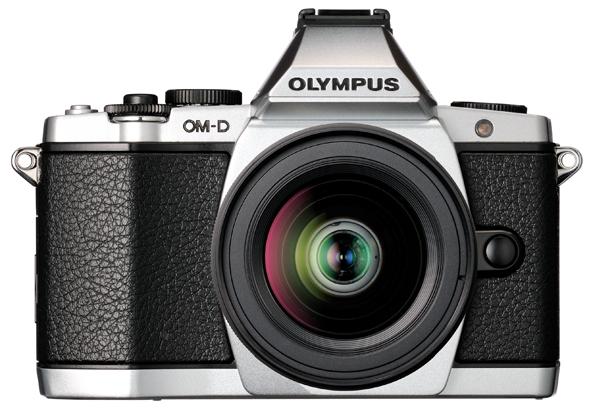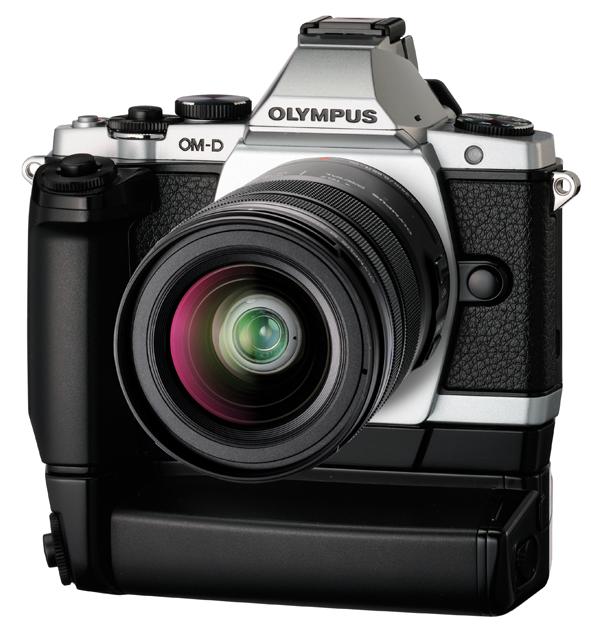 In more camera news that everyone saw coming from a mile away, the Olympus OM-D E-M5 has been officially announced, marking a new series from the manufacturers that brought you the very popular Micro Four Thirds PEN series. While it has a stylish body and MFT, interchangeable lens systems in common with the former, the OM-D line is an entirely different animal.
In more camera news that everyone saw coming from a mile away, the Olympus OM-D E-M5 has been officially announced, marking a new series from the manufacturers that brought you the very popular Micro Four Thirds PEN series. While it has a stylish body and MFT, interchangeable lens systems in common with the former, the OM-D line is an entirely different animal.
The OM-D series pays homage to the original OM SLR series, with its triangular viewfinder design and retro body. Of course it’s been outfitted with a number of new features to bring it into the digital age. Here’s a quick look at the E-M5’s specs:
- 16.1-megapixel Live MOS sensor
- Electronic viewfinder
- Olympus’ “world’s fastest” AF system
- Dustproof, splashproof body (similar to the exterior mechanics of its E-5 DSLR)
- 3-inch OLED tilting touchscreen
- New movie effects: one shot echo and multi-echo
- Shutter speed: 60-1/4000 sec.
- ISO: 200-25600
- New art filters: Key Line, Cross Process II, Dramatic Tone II
- Built-in flash, but not a pop-up flash — there is a hot shoe port for the included electronic flash accessory
The E-M5 has many of the features we’ve come to expect from Olympus’ MFT cameras plus some significant improvements to processing and shooting speed, but we can’t stress enough how different of a camera it is. A few distinct things set it apart.
A new, old build – and an EVF

Integrating an EVF deserves special mention. The rest of Olympus’ MFT lineup relied on the display or detachable EVF accessories via the hot shoe port. But now it’s putting on its big boy pants and building one right into the camera, complete with the very classic design of its original OM series.
More on that EVF though: it’s an HD, 120fps refresh rate with an eye-sensor built in so you can quickly switch from looking at it or the OLED display (the latter of which, it should be mentioned, is a nice holdover from the E-P3). The EVF features 100-percent field of view and a 1.15x max magnification. Settings data is displayed at the bottom of the viewfinder.

And there’s no way around it: the E-M5’s body is striking. It’s magnesium alloy, making it heavier than the PEN series cameras. It has all the vintage goodness (check out the Olympus OM10 SLR at right) of competitor cameras without the breakable factor. The E-M5 (and the electronic flash accessory that ships with it) is incredibly durable thanks to its dustproof, splashproof sealing.
A new take on image stabilization
The 5-axis image stabilization system the E-M5 boasts is arguably its most revolutionary feature. Olympus gave us a glimpse of this new technology back at CES. Most image stabilization systems move to ways to reduce camera shake: back and forth on a y-axis and an x-axis; back and forth and up and down. Olympus has created a more flexible mechanism that moves not only horizontally and vertically but uses rotary motion as well as “the yaw and pitch” motions.
It’s much smoother and has a more moldable feeling movement to it than your traditional IS apparatus. The idea is that the E-M5 will be able to combat external factors better than competitor systems.
The battery pack grip
The EM-5 introduces yet another distinguishing feature for its breed in the HLD-6 Power Battery Grip. The accessory connects not only to give the camera extended life but for easy landscape handling or the added shutter when taking portrait shots.

So… versus the X-Pro 1?
We already want to see a shoot-out between the Fujifilm’s recently introduced X-Pro1, it’s very professional, capable ICL addition to the X-series. The X-Pro 1 has a better sensor, hybrid viewfinder, and introduces new pixel array technology that cleans up high-res images. That said, the E-M5 is bringing a new image stabilization system and features like durability, a tilting OLED touchscreen, and higher ISO sensitivity to the table (with a lower price to boot — the body only will retail for $1,000, black or silver body with 12-50mm F3.5-5.6 EZ lens for $1,300, and black body with 14-44mm F3.505.6 II R lens for $1,100). The X-Pro 1 is $1,700 for the body alone.
That’s not to say the E-M5’s features outweigh the X-Pro 1’s, but we can understand the need for buyers to get some comparison on these two models: they’re arguably the most professional-level next-gen cameras on the market.
And they are sure not to be the only ones interested in exploring this market. Next-gen innovation is going to continue, and it’s going to span the spectrum and aim for beginner and advanced shooters’ pockets.
For more images, check out our E-M5 photo gallery.


